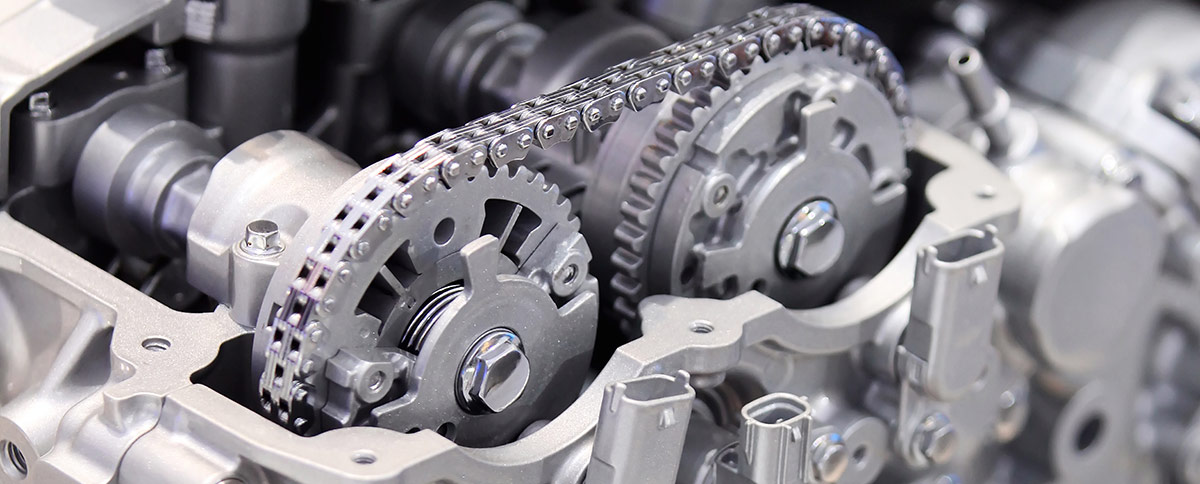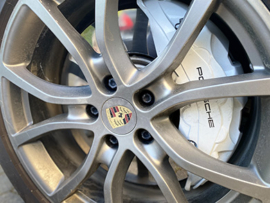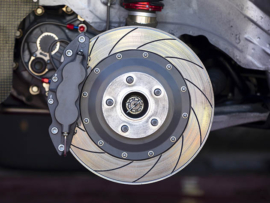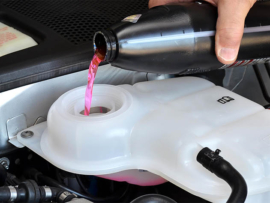
In the recent several years, when buying a car, many owners are more likely to choose a car that uses a timing chain rather than a belt in the engine. This decision is taken in view of the high lifetime of the timing chain and it does not require replacement in the major part of the engines. But this is not always the case.
The timing chain transmits torque from the crankshaft to the camshaft, synchronizing the opening and closing of engine valves. For its operation it is important to be in the proper tension, this is the main parameter to control its condition. Unlike cheaper chains, the more expensive ones are not pulled out or compressed during operation. Tensioning of the timing chain is carried out by hydraulic pulleys operating with the help of engine oil supplied from the internal combustion engine lubrication system. According to the number of camshafts, pulleys can be from one to three.
The chain starts when the engine is started and runs until it stops. It is constantly under heavy load, which causes it to wear and stretch. If it is not replaced as planned, it can be cut off and the engine can be repaired expensively. Even if the chain or timing belt is stretched, it can damage the engine.
The lifespan of a timing chain depends directly on the material used and the absence of manufacturing defects. This also applies to gears that work with the chain. Also, proper operation of the internal combustion engine lubrication system and regular engine oil changes are very important for the long service life of the timing chain.
The estimated lifespan of a modern chain is at least 125-150 thousand miles. However, it is often not able to withstand so long. Timing chain breakage is widely known for 60,000 miles, or even 40,000. The fact that this happens only with certain models of cars, indicates a factory defect. And not always breakage occurs due to poor quality manufacturing of the chain and pulleys. Sometimes the problem is caused by lack of lubrication.
What Happens If the Timing Chain Wears Out or Tears?

In most cases, breakage of the timing chain is accompanied by faulty valves of the internal combustion engine, which will eventually have to be replaced. In cars with a diesel engine, in case of a breakage, the camshaft breaks down. In this case, the chain, camshaft, valve and gasket are changed.
If the chain is not replaced in time, it leads to serious engine malfunctions and subsequent expensive repairs. Therefore, it is important to carry out diagnostics and if there are signs of wear, to replace the part in time.
Note: When purchasing a used vehicle, the chain drive should be inspected first. Otherwise, in addition to the cost of buying a car, you will have to pay for the repair.
5 Timing Chain Problem Signs Car Mechanics Meets Most Often
Below you can find the 5 most common timing chain fault signals, that you should know.
Engine misfiring and jerky operating
This is due to the problem with valve timing (determined by the engine code reader). The reason for this is chain stretching due to wear. In this case, you will hear the classic misfire sound and if you will push the accelerator pedal – you will lack the engine power. Also, it can be seen by exhaust gases – they can become dark.
This are very serious symptoms and if you still use your car further, the chain can rip and damage your engine. A chain is much more massive than a belt, and in the case of a breakup it usually takes whole pieces of metal with it.
Increased, fluttering noise when idling
Attention should be paid to unusual sounds (noise, rattling), especially those that appear immediately after start-up or during continuous idling. If you find such signs, it is worth visiting a car service. Good motorists can easily recognize such faults even by sound.
As mentioned above, when the chain wears down, it elongs and slacks. The pulleys come out full to tension it. But when engine idling, the oil pressure is lowered and the pulleys that depend on it may not pull the chain as well.
Metal debris in the engine oil
This is difficult to see, but when the timing chain begins to wear out, it causes the moving parts in the cylinder block to move out of sync and small pieces of metal come off. This disbalance speeds up engine wear and metal shavings appear in the engine oil. This can be seen when changing the oil by draining it from the sump to a special oil pan.
Your auto mechanic can check this at the next oil service. But, if there are metal debris in the engine oil, do not change the timing chain immediately, because the cause of the occurrence of the metal shavings may be caused by wear of the valves in the engine block head.
Car wont start
If the car doesn’t start, this can be caused by a wide range of engine failures, or even that you fuel tank is empty. One of the reasons can be a timing chain break. And it is a very sad news, because the engine components such a pistons, valves, engine head or even camshaft (if the engine is diesel) are damaged and in this case a cost-expensive engine repair will be, that can really break the bank.
Due to this, the proper car engine maintenance is important and can really save a lot of money and ensure safety of the trips. Often the timing chain has broken during carrying and this is also a bad news, due to the serious engine repair and possibly roadside emergency situation. Regular oil and oil filter change, visual inspection of the timing chain drive is critical to avoid engine failure.
Check engine signal illuminated
The wear signal of the timing chain can be a lighted indicator “Check Engine”. To understand that it is necessary to change the timing chain, you can make diagnostics with the engine error scanner. This is a common procedure at any auto service. The point is that when the timing chain or belt elongs, certain sensors in the engine record this and store the information in the ECU. Auto-mechanic scans the information about possible problems in the car and gets it in the form of error codes. Modern scanners allow you to get this type of report even without experience in a car maintenance. All you need to do this by your own hands is to choose a scanner and connect it to your car’s OBD2 port. Report will got in your smartphone or scanner display, depends on the scanner type.







